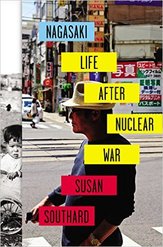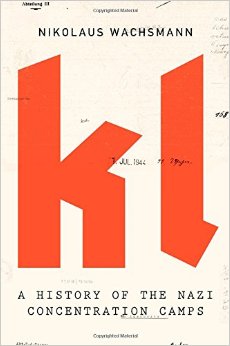|
Books on the bombing of Nagasaki and the American Supreme Court case that legalised racial segregation have won prizes named for the late author and journalist J. Anthony Lukas. In a joint release given to 'The Associated Press', the Columbia Journalism School and the Nieman Foundation for Journalism at Harvard University announced Wednesday that Susan Southard's "Nagasaki: Life After Nuclear War" had won the J. Anthony Lukas Book Prize, a $10,000 honour for a work of "political or social concern." The $30,000 Lukas award for best work-in-progress went to Steve Luxenberg for "Separate," about the Supreme Court's 1896 Plessy v. Ferguson ruling. The winner of the $10,000 Mark Lyndon History Prize was Nikolaus Wachsmann for "KL: A History of the Nazi Concentration Camps." The Lukas prize project was established in 1998. Source: Associated Press On August 9th, 1945, three days after the atomic bombing of Hiroshima, a 5-tonne plutonium bomb was dropped on the small coastal city of Nagasaki. The explosion destroyed factories, shops and homes and killed 74,000 people while injuring another 75,000. The two atomic bombs marked the end of a global war, but for the tens of thousands of survivors it was the beginning of a new life marked with the stigma of being hibakusha (atomic bomb-affected people). Susan Southard has spent a decade interviewing and researching the lives of the hibakusha and their raw, emotive eye-witness accounts. Their testimonies reconstruct the days, months and years after the bombing, the isolation of their hospitalisation and recovery, the difficulty of re-entering daily life and the enduring impact of life as the only people in history who have lived through a nuclear attack and its aftermath. Following five teenage survivors from 1945 to the present day, Southard unveils the lives they have led, their injuries in the annihilation of the bomb, the dozens of radiation-related cancers and illnesses they have suffered and the humiliating and frightening choices about marriage they were forced into as a result of their fears of the genetic diseases that may be passed through their families for generations to come. The power of Nagasaki lies in the detail of the survivor's stories, as deaths continued for decades because of the radiation contamination, which caused various forms of cancer. Intimate and compassionate, while being grounded in historical research,Nagasaki reveals the censorship that kept the suffering endured by the hibakusha hidden around the world. For years after the bombings news reports and scientific research were censored by U.S. occupation forces and the U.S. government led an efficient campaign to justify the necessity and morality of dropping the bombs. As we pass the seventieth anniversary of the only atomic bomb attacks in history, Susan Southard captures the full range of pain, fear, bravery and compassion unleashed by the destruction of a city. The personal stories of those who survived beneath the mushroom clouds will transform the abstract perception of nuclear war into a visceral human experience. Nagasaki tells the neglected story of life after nuclear war and will help shape public discussion and debate over one of the most controversial wartime acts in history. In March of 1933, a disused factory surrounded by barbed wire held 223 prisoners in the town of Dachau. By the end of 1945, the SS concentration camp system had become an overwhelming landscape of terror. Twenty-two large camps and over one thousand satellite camps throughout Germany and Europe were at the heart of the Nazi campaign of repression and intimidation. The importance of the camps in terms of Nazi history and our modern world cannot be questioned.
Dr Nikolaus Wachsmann is the first historian to write a complete history of the camps. Combining the political and the personal, Wachsmann examines the organisation of such an immense genocidal machine, whilst drawing a vivid picture of life inside the camps for the individual prisoner. The book gives voice to those typically forgotten in Nazi history: the 'social deviants', criminals and unwanted ethnicities that all faced the terror of the camps. Wachsmann explores the practice of institutionalised murder and inmate collaboration with the SS selectively ignored by many historians. Pulling together a wealth of in-depth research, official documents, contemporary studies and the evidence of survivors themselves, KL is a complete but accessible narrative.
0 Comments
Your comment will be posted after it is approved.
Leave a Reply. |
Archives
March 2021
|






 RSS Feed
RSS Feed
